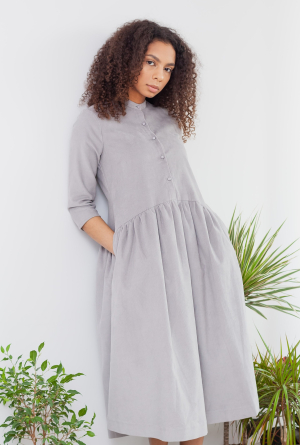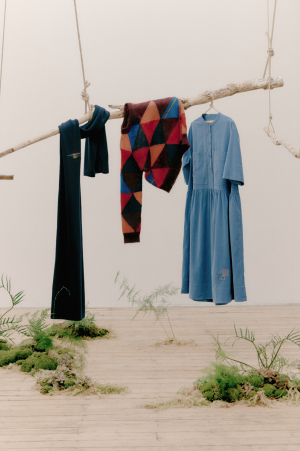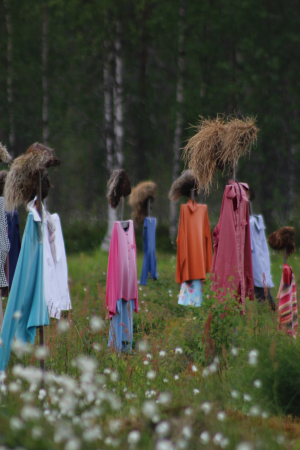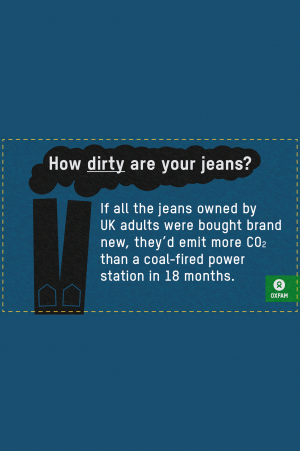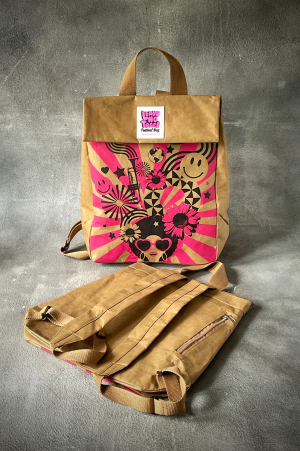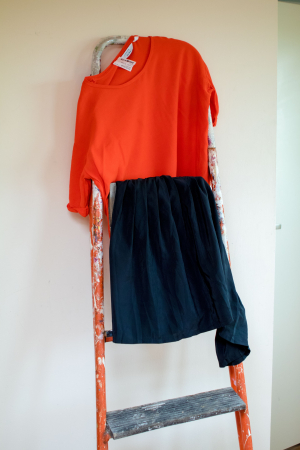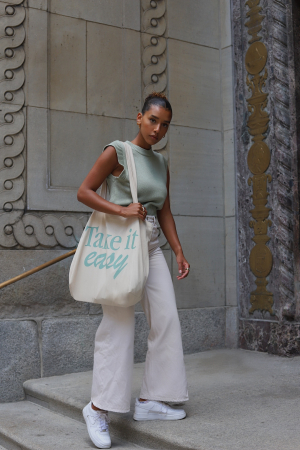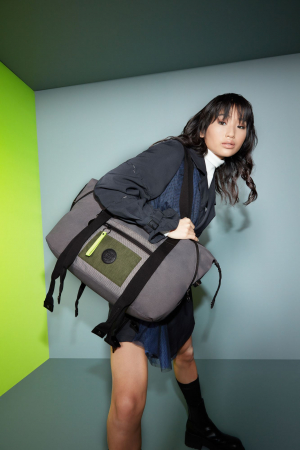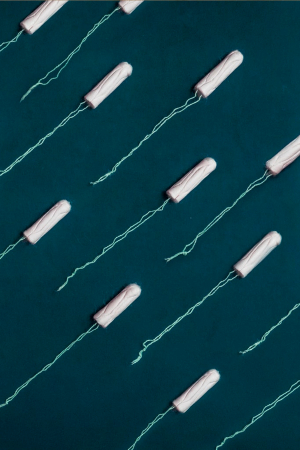The Impact Of Our Fashion Product Returns
Buying your next outfits online can be fun and save you time in-store in person but the impact on your returns is less fun than you might think.
TOAST Renewed, Repaired Clothing Collection Made To Last
Lifestyle brand TOAST invites you to cherish your clothing with skilled mending, made to last for years to come with their recently launched ‘TOAST Renewed' collection.
The Waste Of Overproduction
The public lens is on the costs and waste occurring in different industries, including fashion, and raising awareness of the production chain issue or many issues within it.
The weight of your brand new jeans in CO2 revealed by Oxfam
Oxfam, global anti-poverty movement, is urging shoppers to buy clothes secondhand rather than brand new as its new research reveals emissions produced manufacturing jeans owned by UK adults is comparable to flying a plane around the globe 2,372 times or a petrol car travelling more than 21 billion miles.
Love festivals? Love the environment with The Festival Bag
Have you circled the calendar with at least one outdoor gig this summer? You are joining a big tribe of festival-goers but join the green one.
Simple ways to be more sustainable with your fashion choices
Recently Love Island made the decision to dress contestants in second-hand clothes from eBay, and this is going to speak of a huge change in viewers’ shopping habits.
How sustainability is key to unlocking the full potential of the Gen Z market
With brands constantly looking to stay ahead of the game and meet the ever-evolving needs of customers, one demographic that they cannot afford to overlook is Gen Z.
A NA-KD-clear Example of Climate Action
Pollution and climate change is the hefty bill planet Earth pays for our wardrobes. Thanks to the example of sustainable fashion brands like NA-KD, we know that a global action plan is possible.
 Ph. hello i m nik, Unsplash
Ph. hello i m nik, Unsplash
Multi-tasking and multi-targeting, this is the climate action plan set and run by NA-KD. The daunting mission has many green goals and it is still achievable.
Fashion And The Environment: The Facts
The changes experienced by the environment are tangible and, most of all, global. The public attention is all on the main actor in today's climate disruption: fashion – or better – fast fashion.
With the trends coming and going and the pressure to follow them, fast fashion has provided the mass with an endless variety of always fresh clothing at reasonable prices. The price tag might be low, but the consequences on the ecosystem proved not to be so light and for many different reasons.
From a consumer point of view, the fast-fashion temptation led to more purchases which indirectly lowers down the life span of our clothing and causes more textile waste. Numbers clarify the state of facts: in Europe1, for example, people buy 26Kg of new clothing and discard an impressive 11Kg every year. Sales have been increasing by 40% since 1996 but, on the other hand, the EU fashion industry has not been able to keep up with fabric refuses as just 1% of the textiles was recycled for clothing due to technological issues.
If we are guilty of overconsumption, many brands lack sustainability in their production. Indeed, every step in fashion manufacture can be deemed responsible for greenhouse emissions, water pollution and land degradation. To break down the process, these phases are sourcing new raw materials, processing and producing new clothing, packing and shipping goods. As we will see shortly, NA-KD focuses on each one in its ecological journey toward a climate-neutral production by 2025.
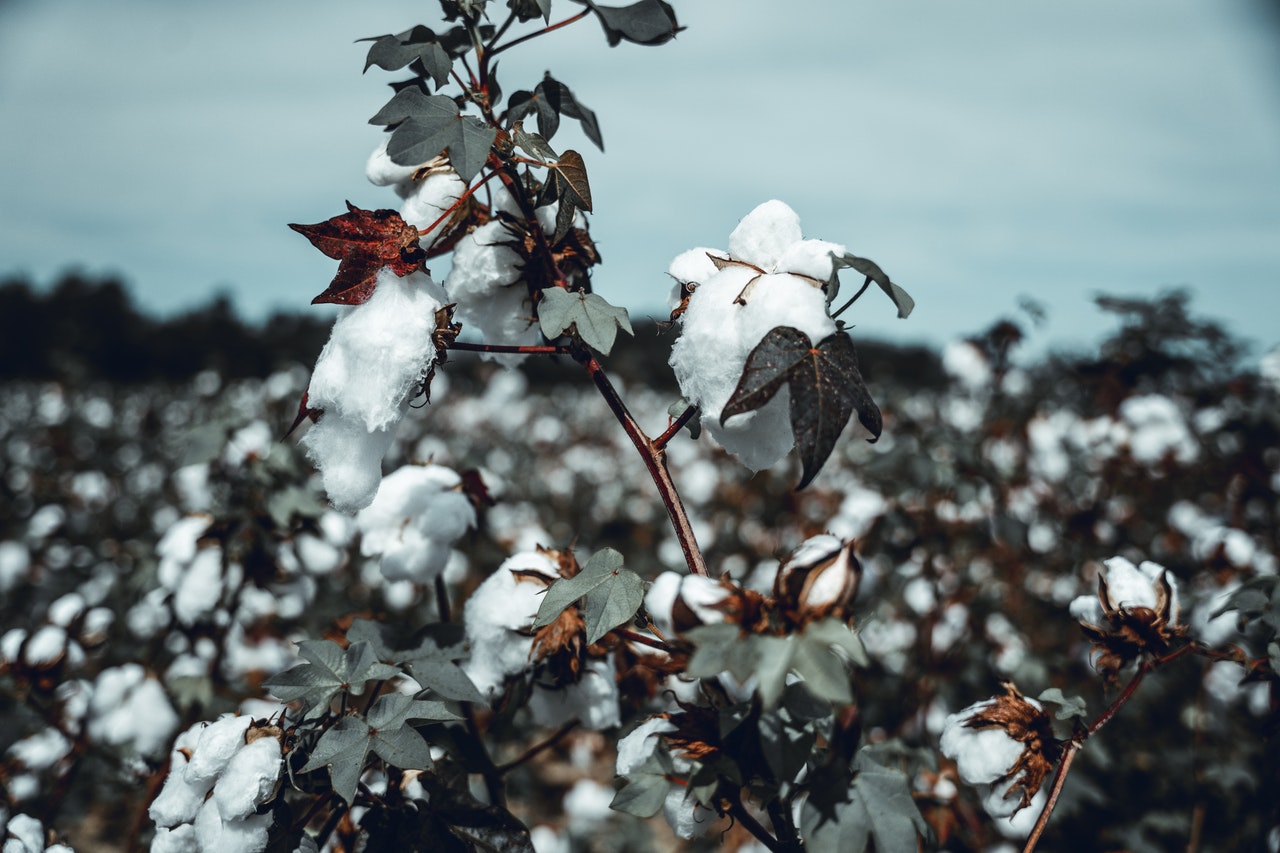 Ph. Crsten Vollrath, Pexels
Ph. Crsten Vollrath, Pexels
Present on the shelves for 24%, cotton is a very common natural fibre in this industry, yet it is the least sustainable material. Its production involves considerable consumption of water for irrigation and land: alone, 1Kg of cotton needs between 10,000 and 30,000 litres of water depending on the geographical region2. 1 cotton t-shirt equals 2,500 litres of water!
Furthermore, the remaining water sources are polluted by pesticides and insecticides employed in cotton cultivation, dyes and chemicals from clothing and jeans processing, and microfibres. Although small, microparticles, in the long run, pollute water basins and oceans ending up putting marine fauna at severe risk. 0,5 million tonnes of plastic microfibres – that is 35% released in the environment – come from washing synthetic clothes. Again, one straightforward example taken from daily life will wake you up: 1 laundry of polyester clothing creates 700,000 microplastics3 going down the water pipes.
 Microplastics found in Mirissa Harbour, Sri Lanka. Ph. Soren Funk, Unsplash
Microplastics found in Mirissa Harbour, Sri Lanka. Ph. Soren Funk, Unsplash
Even before we can put our hands on some brand-new clothing, more pollution comes along. Bringing fashion goods to distribution sites all over the globe translates to material waste and CO2 emissions through packing and shipping. In total, on the shoulder of the fashion industry, there is 10% of the global carbon emissions. The analysis run by McKinsey states that the amount reached 2.1 billion metric tonnes of greenhouse gases in 2018, foreseen to jump to 2.7 billion metric tonnes by 2030 with no drastic changes are taken.
The NA-KD Green Example
 NA-KD Reborn, a collection made of more sustainable materials
NA-KD Reborn, a collection made of more sustainable materials
Switching to a greener production may seem an epic deed. Indeed, it is not easy and requires a multi-tasking approach. NA-KD carbon-neutral journey is an example we wish many companies will study and copy for the future. But what is so special about it?
The difficulties lie in the disparate production phases and the many actors involved from start to end: suppliers, brands, delivery companies, retailers and, finally, consumers. NA-KD's plan tackles every source of pollution and liaises with all the entities working in the industry and/or involved.
The brand, born in 2016, is now distributed in 50 different countries, no wonder NA-KD feels the urge to act for the better. The label launched its first sustainable line in 2019 and, by 20254, it aims to:
• halve CO2 emission per product,
• use 100% sustainable materials,
• climate-compensate shipping (by investing in wind power),
• stop any non-sustainable production by 2025,
• reuse or recycle 100% of packaging material by 2025,
• reach a completely transparent supply chain (for 80% of the production),
• fund sustainable initiatives
To reduce its footprint, NA-KD has switched to renewable energy and studied to reduce its carbon footprint caused by transport, while supporting its partner to change for renewable alternatives, have better use of water and more efficient treatment of chemicals. The brand's focus moves then to materials. The first goal was to use 100% more sustainable cotton for its denim by 2022 and have all products made in sustainable materials by 2025. To make this possible, NA-KD informed its purchasing department to make sensible choices; looked for organic and recycled cotton; implemented its certificates, and found new suppliers sharing the same eco-commitments. Having a transparent supply chain and clear communication with the public about sustainability and production are part of this green journey, as well as good practices for every business.
After tackling the problem connected with sourcing, manufacturing and distribution, NA-KD took care of the last but equally important piece in this puzzle: you, the consumer. Fashion consumers feel every day more conscious about the environment and the active role they play through their decisions. The brand's call to action emphasises the love for clothing: how to take care of them and so prolong their life and quality. The #SoMe campaign wants to accompany you through an educational journey, at the end of which you will adopt sustainable behaviours.
Loving your outfits, at some point, will bring you to pass this love onto someone else. NA-KD circular program supports the circularity models by rewarding you with a discount for every return piece of clothing. While you can give back, you can find new discoveries in the pre-loved marketplace section on the NA-KD website.
Although hard and ambitious, climate action is achievable in the fashion industry. The NA-KD plan shows this is a matter of organisation, time, strong commitments and collaboration. Only when all parties will weigh their actions and understand the right things to do, fashion will be finally greener and we hope soon.
Read more about NA-KD’s sustainability commitment and discover its sustainable and pre-love ranges online.
Sources: 1, 2, 3, 4.
KIPLING® X Redress: limited-edition sustainable capsule collection by Beatrice Bocconi
Redress and VF Corporation, parent house of Kipling®, collaborated again after the success of the Redress Design Award 2019 Made For Change Challenge in Hong Kong. The first competition amongst Redress Alumni aimed to find the designer for a sustainable collection based on circular design principles and using VF Corporation deadstock, end-of-roll fabrics, or innovative recycled fabrics. The winning design had the privilege to become a limited-edition capsule collection retail exclusively in Kipling stores from November 15th, 2021 across APAC.
What impact do our periods actually have on the environment?
In recent years, we have become increasingly aware of how much human activity can affect the environment.


